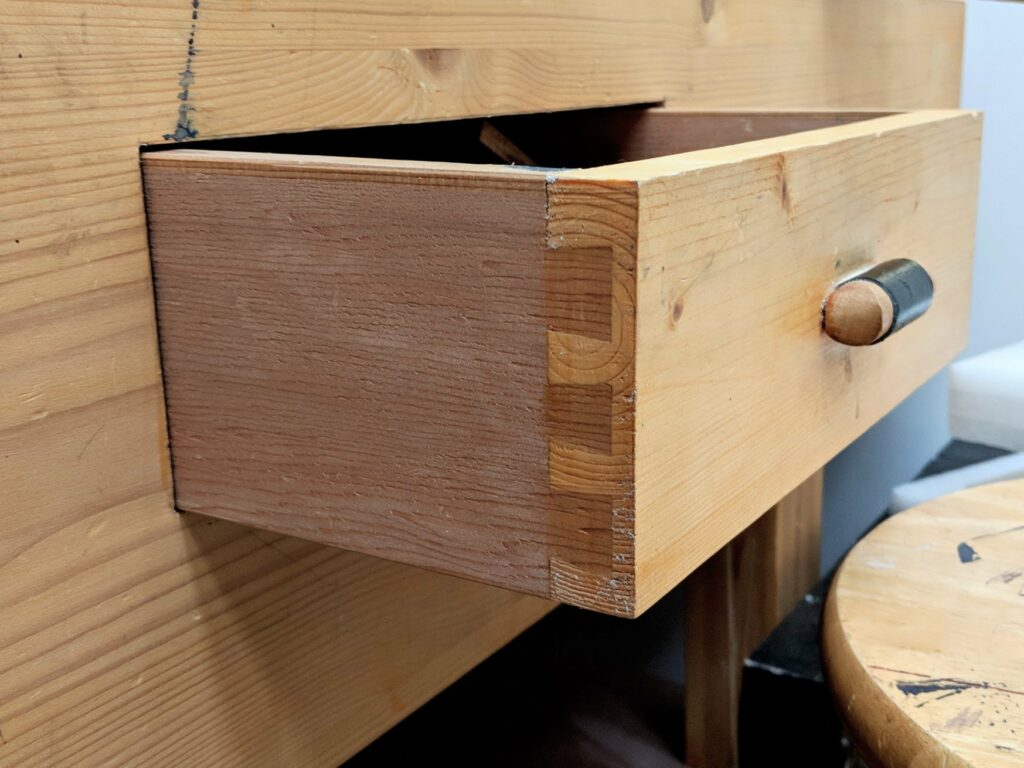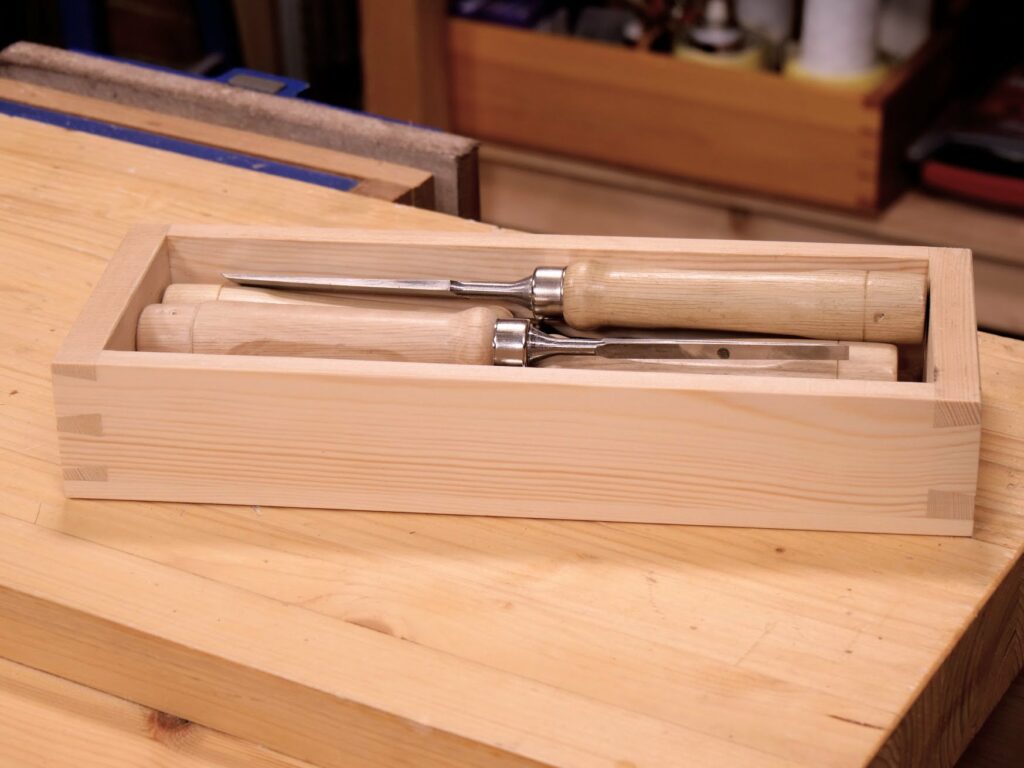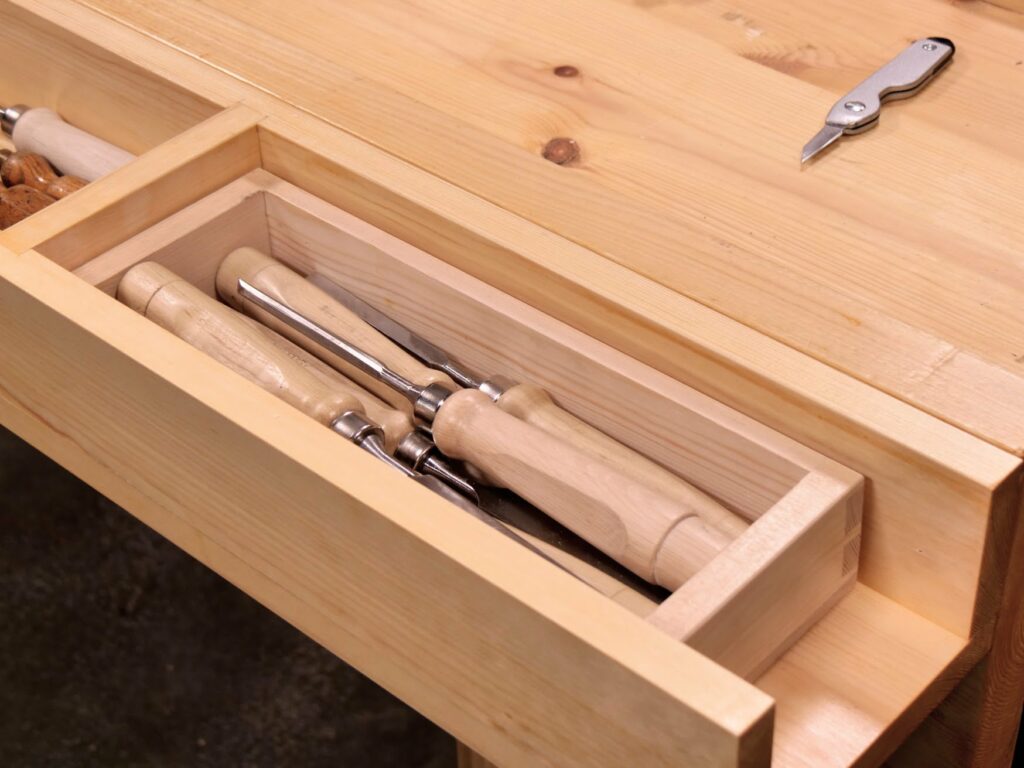Bench Drawer—Forget Marking Gauges
Making a workbench drawer is a good way to familiarise anyone for drawer making. It’s certain to demolish anyone’s fear that half-lap dovetails are hard to deal with. The system I developed and use almost every time for half-lap dovetails guarantees good fitting dovetails and an outcome designed to last for a century of daily use. Everything comes from a knife-edge cut or the cutting edge of the hand router plane. Passing on the workbench to you, your children and your grandchildren is made all the more remarkable by them also learning and knowing how the particular details of the joinery course it provides in housing dadoes, mortise and tenons and now half lap dovetail came together for you. I find it hard to imagine even now what the full value has been and will be in the legacy of videography and online training will be to present and future generations.
Metamorphosing the whole process into a working workbench and transitioning from through or common dovetails to the hidden type that lies beyond the closed drawer front means growth to maturing in joinery. That’s why I am including it here as a suggestion for you to develop it. It’s a training project alongside a necessary and practical outcome designed for a lifetime of use and functionality. Starting here at your workbench embraces the desire for growth in your upskilling in craft. Aside from that, I would never be without a workbench drawer and will say here and now to the naysayers suggesting that you cannot access the drawer when something is clamped in the vise—rubbish! For the odd occasion that that might and does happen, the benefits far outweigh the slight and occasional inconvenience. Living without the bench drawer is just another non-negotiable for me.
I entitled the post as I did because this method dismisses the need for marking gauges as such and relies on the slicing cuts of a well-sharpened router. In preparation for the actual drawer, why not practice one or two ahead of time with me. We will be videoing the whole process soon but in the meantime I will be posting a blog to get you started and whet your appetite. Ideally you will be bested by owning a hand router but it is not absolutely necessary because you can form the step-down with a chisel alone. the router does however give a more guaranteed outcome generally and that’s why I included it in my Essential Woodworking Hand Tools book as a definite essential. If you know anything about my writing and teaching you will know that I have brought this tool back into the forefront of woodworking when it was almost dismissed as a dinosaur o the ancients. Buy when you can because in all of my teachings and on almost every typer of woodworking joint and joinery this tool raises the bar of accuracy, mostly because over the past two decades I have introduced it to perform in places Stanley and Record never intended for it to perform. The secondhand prices have risen from £20 on eBay to well over £100. That being so, I recommend you get in line with the backorders and get yours in the pipeline from them. Both Lee Valley Veritas and Lie Nielsen produce at more competitive prices with eBay now, funnily enough, and both work equally well. I am currently putting the Lie Nielsen through its paces. It’s is well engineered, as you expect from this maker, and comes ready to use. Veritas versions I have used for a decade and these are flawless too. 
I have planned a practice project by way of a chisel or tool tray to be made that’s designed to explore four different dovetails in a single box-type construction project. I hope that you will join me and post the pictures as we grow. This will prepare you for the drawer making in your workbench. You’ll love it I’m sure.


Paul, thank you in advance for this. Based on forum comments, a lot of us are awaiting your sage advice on The Drawer before cutting a big hole in the apron of the workbench! My own bench is almost complete, hand tools only. A great feeling.
looking forward to the video on the workbench drawer construction. I think i understand from other videos on how to build the drawer itself, attaching it to the work bench so it functions as expected outside just a hole cut in the apron has me the most curious
Yes, me too. I have been anxiously awaiting to see how Paul does the drawer runners. It is the last item I need on my workbench. I hope he can put that video out soon because I am sure it will be good.